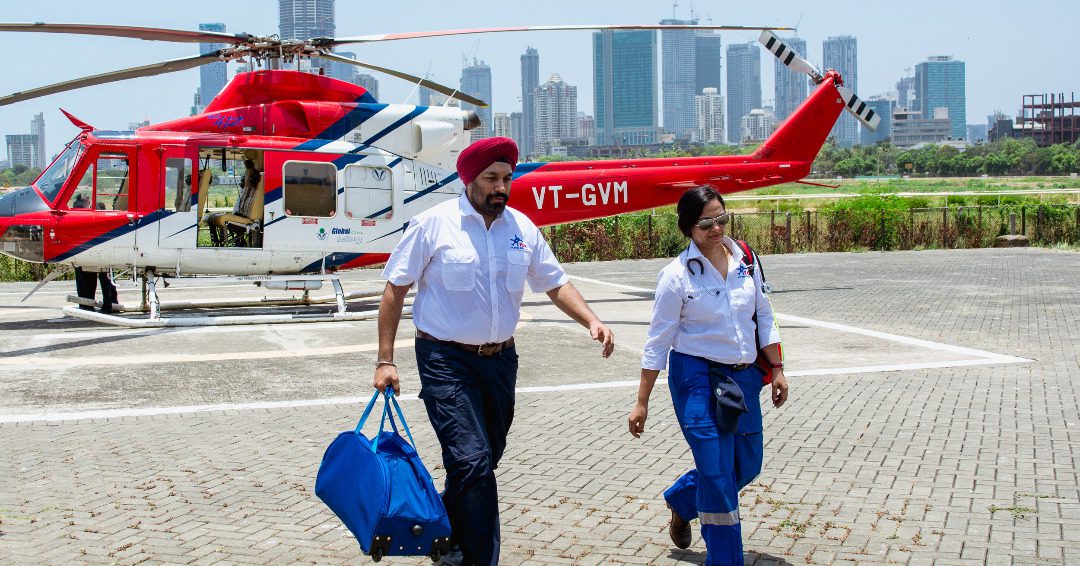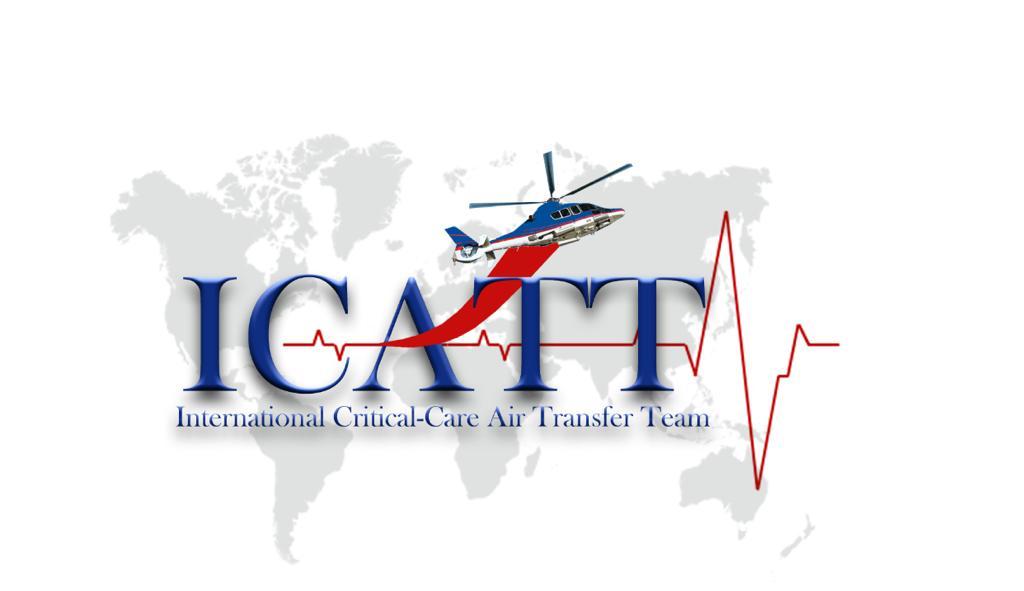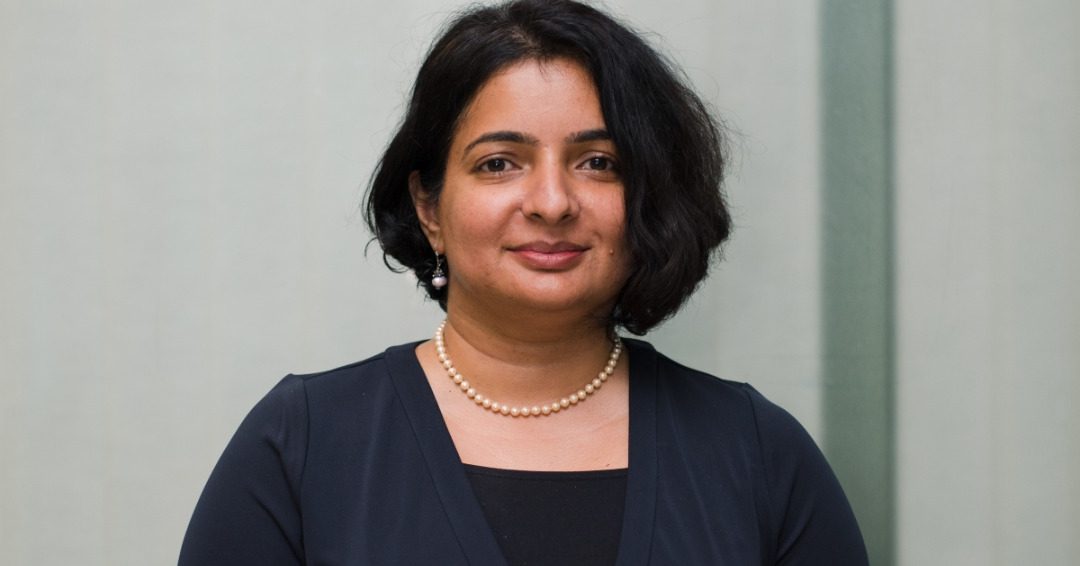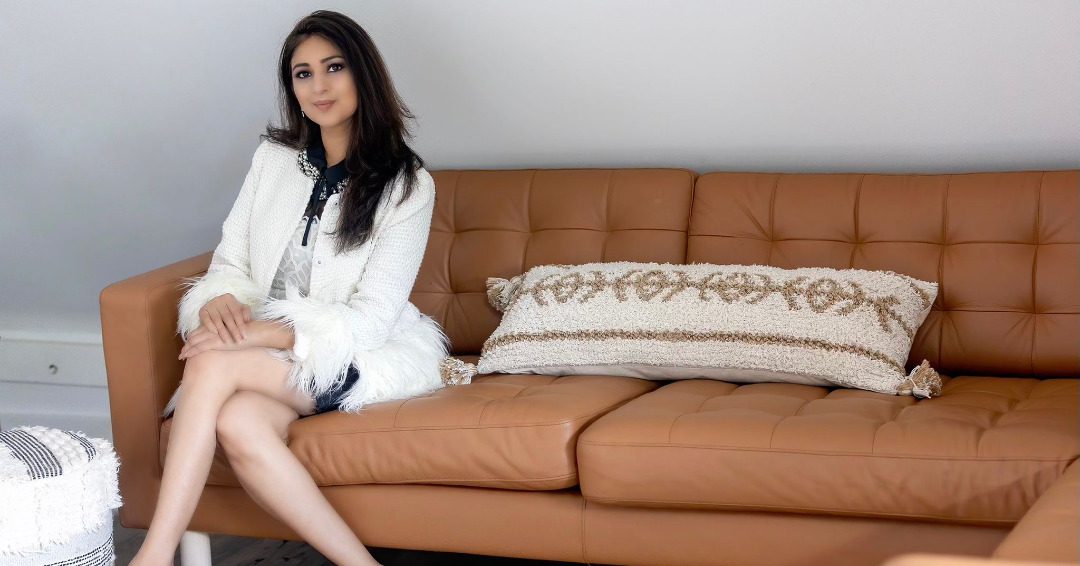(November 20, 2021) They say a lot can happen over coffee. For doctor duo Dr Rahul Singh and Dr Shalini Nalwad, those conversations over a hot cuppa on numerous nippy Liverpool days led to India’s first aeromedical emergency unit and air ambulance service by International Critical Care Air Transfer Team (ICATT). Hyderabad born Dr Rahul Singh Sardar and Karnataka born Dr Shalini Nalwad launched the International Critical Care Air Transfer Team — a highly trained air ambulance service in India in 2017. Four years hence, these two flying doctors have trained India’s first aeromedical commandos, entered conflict zones, war-torn areas and answered pleas of critically ill patients, saving precious lives.
An air ambulance is still considered just a means of transport in India. However, the docs stress that keeping critically ill patients stable with in-transit care is key to saving lives. This is where the ICATT team finds fulfilment. From undertaking the longest aeromedical operations from Johannesburg to Chennai to transfer a terminal Cancer patient during a global aviation lockdown in 2020 to airlifting an Indian engineer from Bagram air base in Afghanistan during lockdown, and executing hassle-free air transfers of 400 critical Covid patients within and outside the country — the highly trained team has been busy.
Behind the team of emergency responders are two determined and dedicated doctors who turned entrepreneurs, resolutely self-learnt business, and successfully launched a company that is now one of the leading air ambulance providers in Asia. The team has won an excellence award for “innovation in emergency medicine” at the Emergency Medical Conference in the UK.

Dr Rahul Singh and Dr Shalini Nalwad
The doctors who studied in the UK and Ireland brought back a wealth of training and experience to harness it for an India that even pre pandemic needed aeromedical expertise.
A fortuitous meeting
Dr Rahul’s parents Narpath Singh and mother Sartaj Kaur are from Sikh families settled in South India. The Hyderabad Public School student (which also groomed Satya Nadella and chief ministers) dabbled in computers in his gap year, even entered a personality contest, modelled and choreographed too. Soon the shy and introvert boy who trusted few, transformed. Inspired by relatives in the medical profession, he joined BLDE Medical College in Bijapur (1994), interned at Gandhi General Hospital in Hyderabad, and enrolled for a highly competitive training programme in Anaesthesia and Critical Care in Southeast Thames Deanery, London. As part of the “Shock team” in Glasgow, air transport of patients across Scotland and beyond prepared him for the gargantuan task ahead. He also did higher specialist training in North West Deanery with Manchester as base.
Happenstance connected him with Dr Shalini in 2013, “During the Royal College final fellowship exams, I did a preparatory course in Liverpool where I met Dr Shalini who was from a different Deanery doing the same course,” says Dr Rahul whose wife Dr Daljeet Kaur incidentally is a psychiatrist.

Dr Rahul Singh
Dr Shalini studied at St Joseph’s Convent in Mandya. Selected for the Goldman Sachs’ fellowship programme for women entrepreneurs at Indian Institute of Management, Bengaluru, she finished her fellowship from The College of Anaesthesiologists of Ireland and Membership (postgraduate training) from the Royal College of Anaesthetists, UK. She worked at Europe’s leading air ambulance company AirMed International, and has transferred Level 2-3 patients, trained over 300 doctors, nurses and paramedics in emergency medical and pre-hospital courses. In the past, she has rescued patients across five countries, two continents – airlifting from Libya amidst conflict, war zones like Tripoli, Egypt and Mauritania, and a patient with brittle interstitial lung disease from Karachi for a lung transplant. She is married to Harshavardhana Nalwad, an Orthopaedic surgeon.
A step in time saves nine
“From concept to setting up a bootstrapped grossly under-funded company where the promoters multi-tasked and did everything, to becoming the largest air ambulance service in Asia within four years is an achievement that has made us more confident, mature and less insecure,” smiles Dr Rahul as Dr Shalini nods in agreement, in an exclusive with Global Indian.

Dr Rahul Singh and Dr Shalini Nalwad with their team.
“The company is owned by us without loans or credit,” Dr Shalini adds. While their corporate office is in Bengaluru, operational offices are spread across Hyderabad, Bengaluru, Chennai and Kolkata.
The biggest challenge starting up in 2017 in an era that witnessed major aviation failures (Sahara and Kingfisher), was the complex business model. It saw the duo with no formal training in business pivot. “We had no other option but to boot strap and grow. This was a blessing in disguise as it forced us to work as a lean organisation, and everyone multi-tasked. It made us step out of our medical boots and get involved in the overall running of a corporate,” says Dr Shalini.

Dr Rahul Singh and Dr Shalini Nalwad
The absence of training programmes for aero-medical sciences or transit care medicine in a country where ICU training in emergency situations was, and is still evolving, they had a huge task ahead. “There was a global reluctance to invest in Indian aviation which we overcame organically,” they inform, each harnessing decade-long experience.
Close friends and family helped smoothen the business and organisational end. “At that time, there were no air ambulance aircrafts in South India. All the planes were in Delhi, and thus performing an aeromedical operation in South India incurred heavy ferry costs,” Dr Shalini recalls. There were no regulations from the DGCA on the use of helicopters in medical roles too. After tough struggles, they were invited by the DGCA to make the draft civil aviation requirement document on HEMS (Helicopter Emergency Medical Service).
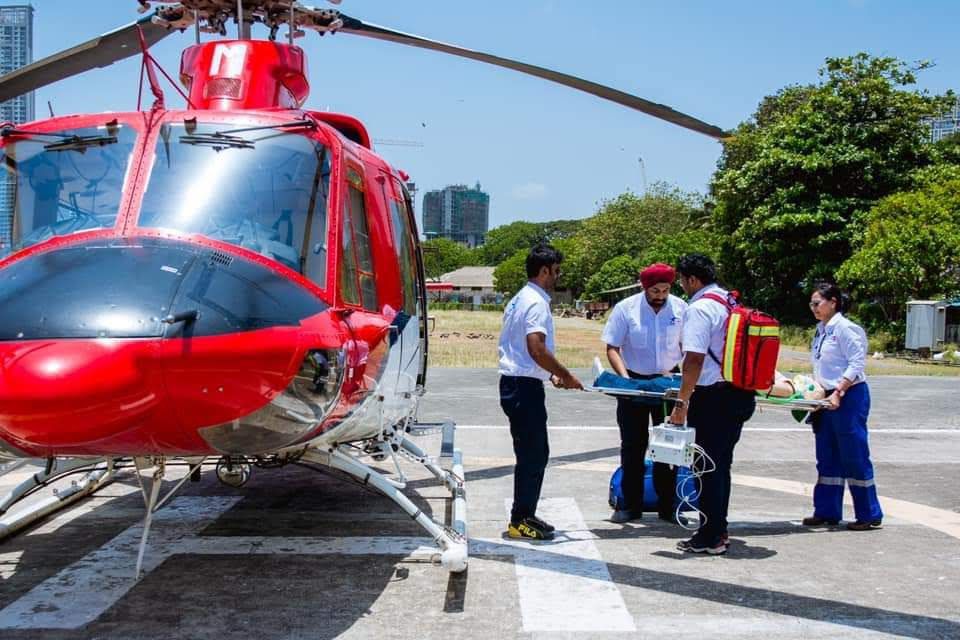
The flying doctors
Embarking on relationship building, and an awareness campaign, early 2016 saw them touch base with medical professionals in hospitals. Invited to conferences, it became a platform to display the air ambulance service practiced in other parts of the world. “We conducted workshops and live helicopter drills, even landed a helicopter in a car park of a conference to display HEMS,” Dr Rahul avers.
After single minded effort and pointers courtesy the duo, DGCA’s operations circulars on HEMS now authorise helicopters to take off and land without prior permissions for medical emergencies. “This forms the basis for all helicopter medical operations to be done in India in the future,” says a victorious Dr Shalini who did her MBBS from JSS Medical College, Mysore University.
It was their wealth of experience which made the air ambulance service a reality. From conception to designing training programmes for flying doctors, also called a Fellowship in Aero-Medical Sciences, they were on track to saving lives. “The syllabus was written by colleagues in London HEMS, a clinical director was appointed from Kent, and the complete faculty came from the UK Aero-Medical Services,” says Dr Rahul, the recipient of a National Business Excellence and Achiever’s Award 2021.
How to gain a fellowship
The course runs in four modules, candidates train in India for three modules in real conditions, the last is in London with real time HEMS operations,” they share. Notably, such a training programme for flying doctors is the first in India.
“Our doctors undergo one of the world’s best training in critical care, anaesthesia, pre-hospital emergency medicine and extra corporeal membrane oxygenator (ECMO). Gruelling sessions at the National Health Service (UK) helped incorporate the culture of clinical governance,” they explain, beaming with pride. The services offered include trauma emergency response, planned air transfer, organ retrieval, ecmo, neonatal, paediatric and high-risk obstetric transfers.
During his specialist training at Northwest Deanery, Manchester, Dr Rahul won the Robbie McKendrick Prize for his work on cardiorespiratory monitoring during transfer of critical patients.
Prices vary between ₹3 lakh to ₹12 lakh, and it is dependent on route, hours flown, patient condition, etc, and offers two aircrafts — a B200 and a C90, both twin engine turbo props.
Saviours during the pandemic
ICATT’s most challenging and ground-breaking operations started during the pandemic. “We did a record creating 126 ECMO initiations and transfers in the past year, more than 400 Covid critical patient transfers,” say the flying doctors who had to overcome insurmountable bureaucratic roadblocks in government machinery to obtain clearances.
Dr Shalini also cautions on the use of air ambulances and says there is nothing called an easy transfer, “It is imperative to understand the impact on the well-being of a patient.” How these two doctors-turned-business partners were able to succeed in a logic-defying venture like air ambulances, one wonders. “Getting involved in every aspect of business, setting achievable goals, enjoying and celebrating small victories, improvising and changing game plans as things evolve made us successful. It taught us to never give up,” they add.

The flying doctors
Dr Rahul and Dr Shalini have added to Brand India with their expertise, and feel, “India is the best place on Earth, especially because a concept can change into an empire if proven right, that (thought) is huge.
Giving back
ICATT Foundation (set up after the 2018 Kerala floods) provides free air ambulance service to the poor. “Under the aegis of ICATT Foundation, we launched the Covid India Campaign — a pan India disaster task force in March 2020 with thousands of volunteers. We raised about Rs 30 crore in donations, and trained nearly 30,000 students in CPR across Karnataka,” informs Dr Shalini, chairperson. her favourite Global Indian is the ex-Prime Minister of Ireland Leo Varadkar whose non-conventional persona and success inspire her.
Follow Dr Shalini Nalwad on Linkedin and Dr Rahul Singh Sardar on Linkedin

